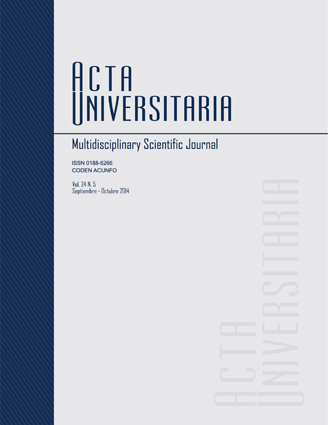Anisotropy of the modulus of elasticity and strength by compression of Pinus michoacana, Pinus douglasiana and Pinus pringlei Wood
Published 2014-10-24
Keywords
- Density,
- radial direction,
- tangential direction,
- longitudinal direction,
- anisotropy.
- Densidad,
- dirección radial,
- dirección tangencial,
- dirección longitudinal,
- anisotropía.
How to Cite
Abstract
The anisotropy feature of wood confers versatility for designing products and wood structures. The objective of this research was to determine the modulus of elasticity and strength by compression on the radial, tangential and longitudinal directions, for P. Michoacana, P. pringlei and P. douglasiana wood. Compression tests were performed on 39 specimens and wood moisture content and basic density were calculated. For each of the species studied, the results of an analysis of variance between radial, tangential and longitudinal directions of modulus of elasticity and strength by compression, suggest a significant difference between the mean values of the three variables grouped into elastic and strength parameters. These results confirm that the elastic and mechanical properties of wood vary according to the direction in which they are measured, verifying the anisotropy feature of the material.
References
Bodig, J. & Jayne, B. A. (1982). Mechanics of Wood Composites. USA: Van Nostrand Reinhold.
- Secretaría de Agricultura y Recursos Hidráulicos. Subsecretaría Forestal y de la Fauna. México: Instituto Nacional de Investigaciones Forestales.

